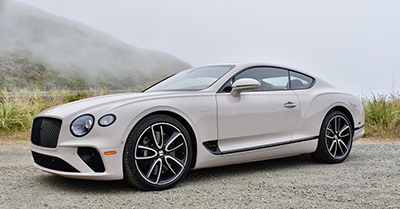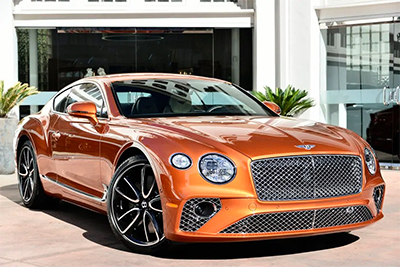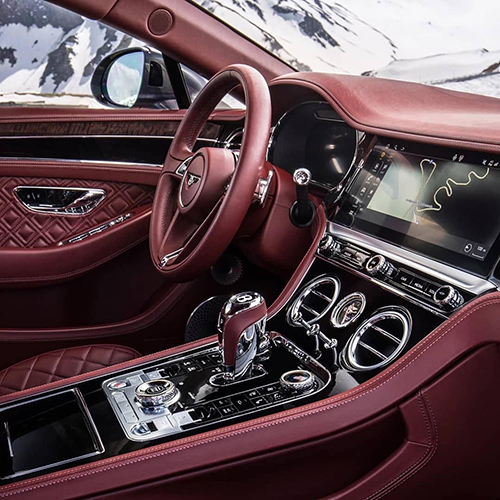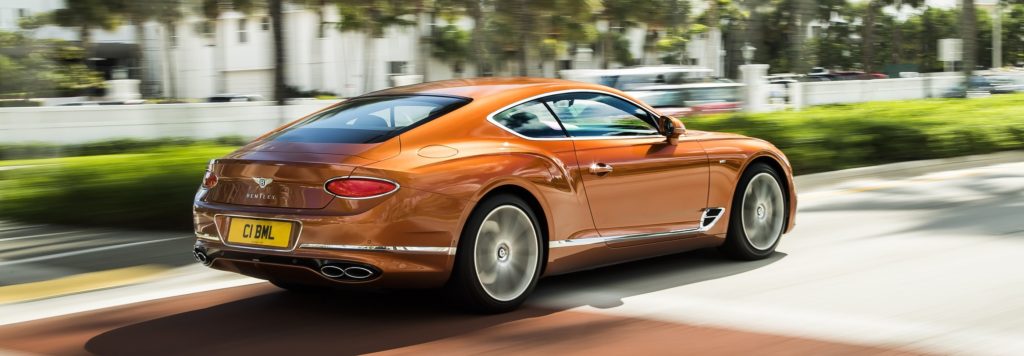
July 25 | AAGD STAFF
The Continental GT’s huge dynamic improvements have
closed the gap between the lightest and heaviest models.
Bentley’s Continental GT is holding its own for 2020, and in addition to getting prettier and even more luxurious, it once again offers two engine choices. The bigger, 12-cylinder option costs $16,100 more than the entry-level eight-cylinder and makes 84 more horsepower.

In the luxury space, where customers love more car, more engine, and—likely above all else—think a bigger price tag means it is better, it would seem that the Continental GT’s optional engine is the only one worth considering. Forget the weaker, smaller, and—whisper it, people—cheaper V-8.
If cars existed only on paper, supposedly. In reality, the two engines bifurcate the Continental GT lineup into two distinct experiences: There is the prestigious, effortlessly powerful, and heavier W-12 engine and the sportier, almost scrappy entry-level V-8. Sure, the price difference between them is equal to the cost of a brand-new Hyundai Accent, but does that really matter when it separates identical-looking ultraluxury two-doors that start at $201,225 (Continental GT V8) and $217,325 (Continental GT W12)?

Bentley’s Continental GT remains a chubby piece, but every 2020 model’s husky-size clothing is now entirely aluminum versus the old version’s predominantly steel skin. Bentley also extended the two-door’s wheelbase 4.1 inches while holding the overall length the same, a move that allowed it to relocate the engine lower and farther back in the chassis. As before, the eight-cylinder models remain the lightest; in a 2020 V-8 coupe test car, which weighs 4926 pounds, is 130 pounds lighter than the new W12 variant according to recent tests and 236 pounds lighter than the last V8 S model. It’s even a smidge lighter than the previous semi-hard-core Continental GT3-R.

That mass reduction helps the twin-turbocharged 4.0-liter V-8 engine’s 542 horsepower and 568 lb-ft of torque feel closer to the more burdened W-12’s 626 ponies and 664 lb-ft of torque than the numbers might suggest. The V-8’s peak torque arrives only a few hundred rpm higher in the rev range than does the W-12’s, at a still commendable 1960 rpm, giving it plenty of off-the-line punch.
The car managed to blast from zero to 60 mph in an impressive 3.4 seconds, a mere tenth behind the W-12 model and a half-second quicker than the previous GT V8 S coupe. Pairing that performance with the ability to drop the top, which also adds more than 350 pounds, should increase the 60-mph dash by about 0.2 second. Pushed harder, the V-8 coupe falls only 0.3 second behind the W-12 through the quarter-mile, posting a 11.8-second pass at 119 mph, and it needs an additional 2.5 seconds to reach 150 mph.


